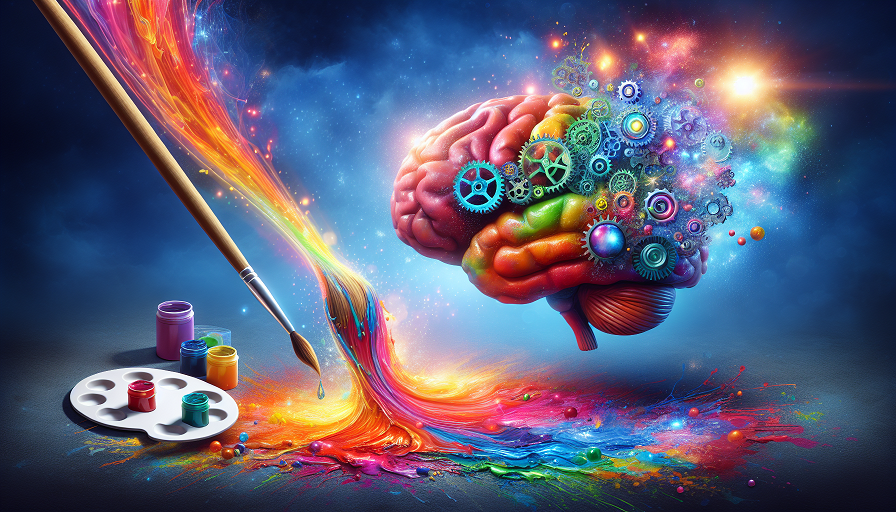
The terms “creativity” and “innovation” are often used interchangeably, but they represent distinct concepts that play unique roles in personal growth, business, and society. Creativity is about generating ideas, while innovation is about applying those ideas to create value. Together, they are the driving forces behind progress and success in nearly every field, from art and technology to business and education.
Here we look at the difference between creativity and innovation, how they complement each other, and why understanding these concepts is critical for fostering both personal and professional growth.
Contents
Defining Creativity
Creativity is the ability to produce new and original ideas. It’s the spark that fuels imagination and the foundation for problem-solving, artistry, and discovery. Creativity isn’t limited to artistic endeavors—it’s a skill that can be applied in any domain, from scientific research to marketing strategies.
Key Characteristics of Creativity
- Originality: Creativity involves thinking in ways that are new and different from the norm.
- Imagination: It often requires envisioning possibilities that don’t yet exist.
- Divergent thinking: Creativity thrives on exploring multiple solutions to a problem.
Examples of Creativity
- A writer brainstorming plot twists for a novel.
- A teacher designing an engaging lesson plan.
- A scientist hypothesizing a new theory based on observations.
Creativity is the starting point, but by itself, it doesn’t always lead to tangible outcomes. That’s where innovation comes in.
Defining Innovation
Innovation is the process of transforming creative ideas into practical applications that provide value. It’s the bridge between imagination and reality, where ideas are tested, refined, and implemented to solve problems or improve existing systems.
Key Characteristics of Innovation
- Practicality: Innovation focuses on applying ideas in ways that are useful and effective.
- Value creation: It aims to improve processes, products, or experiences to meet a need or solve a problem.
- Iterative process: Innovation often involves refining and adapting ideas to achieve optimal results.
Examples of Innovation
- A tech company developing a new app based on user feedback.
- A healthcare provider introducing a new method for patient care.
- An entrepreneur creating a sustainable product that reduces waste.
Creativity vs. Innovation: The Core Differences
While creativity and innovation are interconnected, they serve different purposes. Here are the core distinctions:
| Aspect | Creativity | Innovation |
|---|---|---|
| Definition | Generating original ideas. | Applying ideas to create practical value. |
| Focus | Idea generation and imagination. | Execution and implementation. |
| Outcome | New concepts or thoughts. | Products, services, or solutions. |
| Process | Divergent thinking and exploration. | Iterative testing and refinement. |
Simply put, creativity is the “what,” and innovation is the “how.”
How Creativity and Innovation Complement Each Other
Creativity and innovation are not mutually exclusive—they thrive when combined. Here’s how they complement each other:
Creativity Fuels Innovation
Without creative ideas, there’s nothing to innovate. Creativity provides the raw material for innovation by inspiring new ways of thinking and approaching challenges.
Innovation Validates Creativity
Innovation takes creative ideas and tests their viability. It ensures that ideas are not only imaginative but also practical and impactful.
The Iterative Cycle
In many cases, creativity and innovation form a cycle. Creative ideas lead to innovations, which, in turn, inspire further creativity. For example, the invention of the smartphone (an innovation) sparked countless creative apps and features.
The Importance of Balancing Creativity and Innovation
Both creativity and innovation are essential for success, but an imbalance can hinder progress:
- Too much creativity, not enough innovation: Ideas remain theoretical without tangible results.
- Too much innovation, not enough creativity: Improvements become incremental rather than groundbreaking.
Leaders and organizations should strive to foster an environment that values both creativity and innovation equally.
Strategies for Fostering Creativity and Innovation
To maximize the potential of creativity and innovation, individuals and teams can adopt these strategies:
Encourage a Growth Mindset
Foster a culture where experimentation and learning from failure are embraced. This mindset encourages creative risk-taking and iterative improvement.
Provide the Right Tools and Environment
Offer resources like brainstorming tools, collaborative spaces, and technology that support both creative thinking and innovative execution.
Balance Individual and Team Efforts
Encourage individual creativity while also promoting teamwork for innovation. Collaboration often leads to stronger, more refined solutions.
Prioritize Continuous Learning
Stay curious and seek inspiration from diverse sources, such as books, workshops, or industry trends. Exposure to new ideas fuels creativity and sparks innovation.
Creativity and innovation are distinct yet deeply interconnected concepts. Creativity generates the ideas that innovation brings to life, and together, they drive progress and success. By understanding the differences and nurturing both in your personal and professional life, you can unlock new possibilities and create meaningful change. Whether you’re an artist, entrepreneur, or leader, embracing the synergy between creativity and innovation will empower you to turn imagination into impact.

